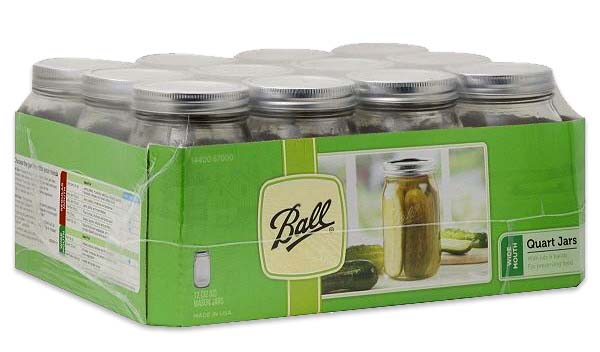Hello Hugh and Sarah,
Do you sterilize your jars before using when dry canning? Do you boil or use dry heat (oven)?
Wonderful articles! I’m converting. I’ve had too many reservations about the mylar bags. Have done a lot with them but some don’t seem to pull a vacuum. It makes me question whether they are truly sealed. In fact, I wonder about whether I should repackage everything in jars. Yikes. We’re talking a 300-400 half gallon bags. – P.B.
HJL Comments: We don’t use water bath canning as a general rule so we don’t worry too much about sterilization. For those times where water bath canning is used, sterilization is a critical part of the operation. When canning with a pressure canner, just having clean jars and lids is enough since the temperature is high enough to kill any bacteria that may reside on them. It is convenient to run the jars and lids through a hot rinse in the automatic dishwasher on the morning that pressure canning is taking place.
For dry canning, since there is no moisture to speak of, no bacteria can get a start, so sterilization isn’t used. We wash the jars (whether they are new or used) in the dishwasher, allow them to air dry and then place a clean lid and ring on them to keep “stuff” out. If they aren’t immediately being used, they get placed back into storage as empties, to be pulled out when we need them. When we are ready to use them for “dry” storage, the dry food, whether bulk or freeze dried, is placed in the jar and a lid and ring placed on it immediately. It’s not necessary to put it under a vacuum right away, but it is necessary to keep it from absorbing moisture from the atmosphere, especially with freeze-dried food. Some things like freeze-dried milk are so hydroscopic that a humid day will destroy them in less than 10 minutes. With a lid and ring in place to keep the moisture level low, it will hold until we clean up and start the vacuum sealing process. We usually just place the jars with lids on them on the kitchen table until all are ready that evening to vacuum seal them. Having them clutter the table is a great reminder that no matter how tired you are at the end of the day, you are not finished until the table is cleared.
One note of caution when using a dishwaher with bulk cleaning of jars is in order here. Modern soaps require a small amount of food debris to work well. Loading your dishwasher full of clean jars and running a full wash cycle with a normal amount of soap can etch the jars and weaken them. If you are going to run a full wash cycle because the jars are new, put a few dirty dishes in with them or cut way back on the soap.
We still use mylar bags though. The boxes that hold 12 quart jars will hold about five to six gallons of bulk dry product and will stack much better than 5-gallon buckets. I have one box that I cut the end off of and place the bag in the box, standing on end just like you would a 5-gallon bucket. We then fill it with dry bulk food that can withstand the crushing force, like grains (wheat, corn, rice, et cetera). The bag is then sealed as normal, the box opened up to facilitate removal and then the whole mylar bag (which is now square like the box) placed in a normal box and stacked on the shelves. The bag is labeled with a sharpie and a label is also taped on the box where it can be seen. When the pantry is nearly empty of whatever is stored in the mylar bag/wooden box, a bag is cut open and transferred into 1/2 gallon jars for ease of use. The only exception is really wheat, because we use enough of it that it is easier to keep the working bin as a 5-gallon bucket with a gamma lid. This bucket is generally filled either from the mylar bags or 1/2 gallon jars (because I have some wheat that I didn’t have time to seal in bags and the jars were available) about every third month or so.
There is no reason why jars and mylar bags can’t coexist in your storage scheme. The mylar bags are good for foods that can stand the force of the vacuum sealing and the jars are used for the more fragile things, like potato flakes and macaroni noodles.










